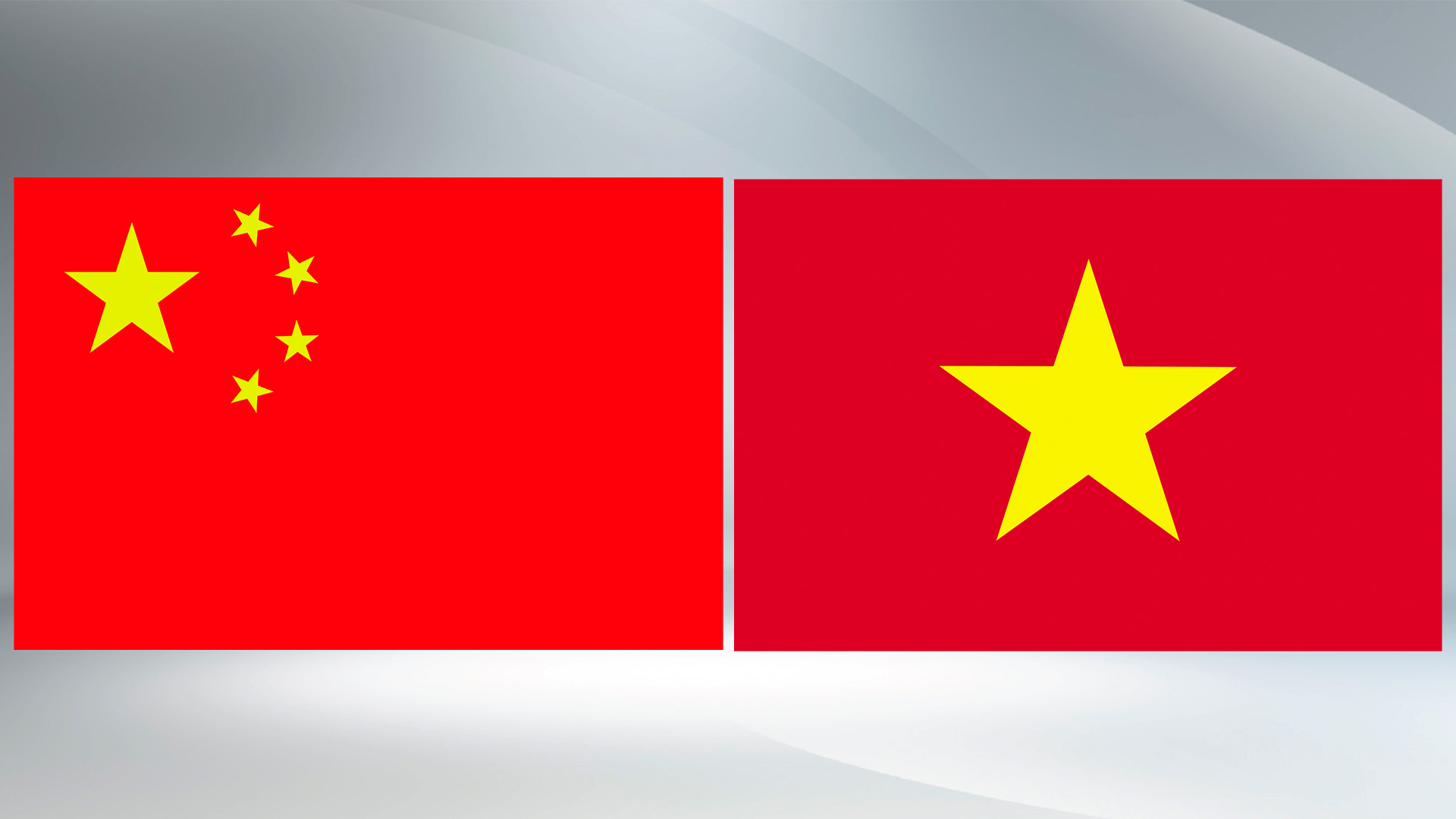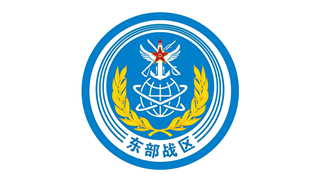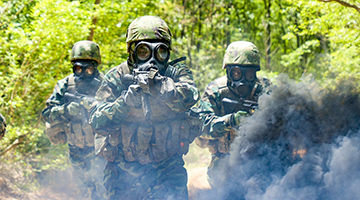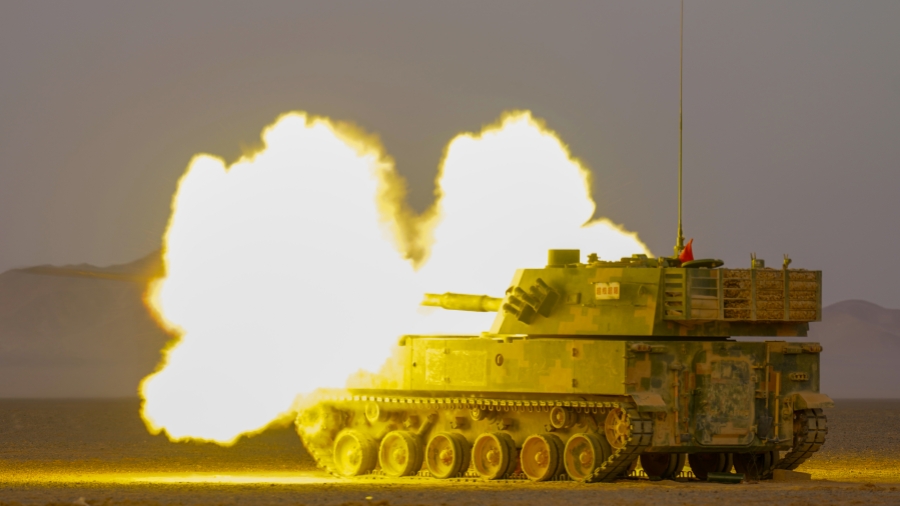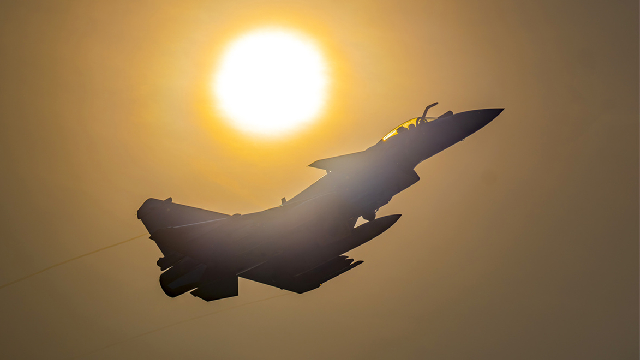By Senior Colonel Tan Kefei, Deputy Director General of the Information Office of the Ministry of National Defense (MND) and Spokesperson for the MND
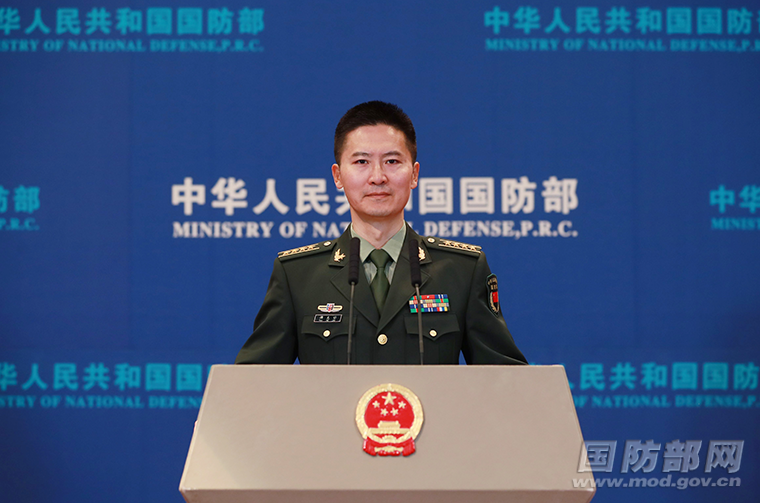
(The following English text of the press conference is for reference. In case of any divergence of interpretation, the Chinese text shall prevail.)
Question: According to media reports, Chinese President Xi Jinping, also general secretary of the Communist Party of China Central Committee and chairman of the Central Military Commission (CMC), stressed at a CMC conference on military-talent-related work that the Chinese military should focus on achieving the centenary goals of the Chinese People’s Liberation Army by 2027 and extensively implement the strategy of strengthening the military through talent development in the new era. Could you tell us more about the conference?
Answer: Since the 18th CPC National Congress, President Xi has incorporated strengthening the military through talent development into the overall strategy of strengthening the military in the new era. Under President Xi’s leadership and promotion, the PLA’s talent-related work has made historic achievements. The CMC conference on military-talent-related work was held in Beijing from November 26 to 28. Convening at a key juncture when China embarks on a new journey toward the Second Centenary Goal of building China into a great modern socialist country in all respects, the conference is important in implementing the spirit of the sixth plenary session of the 19th Central Committee of the CPC and the spirit of the central conference on talent-related work (held on September 27 and 28, 2021 in Beijing) and promoting the further implementation of the strategy of strengthening the military through talent development in the new era. President Xi attended the conference and delivered an important speech, calling for focusing on achieving the centenary goals of the PLA and extensively implementing the strategy of strengthening the military through talent development in the new era. The speech carried and illustrated President Xi’s new concepts, strategies and measures for talent-related work in the new era in the field of national defense and armed forces, and serves as a programmatic document guiding the military-talent-related work of the PLA in the new era.
Adhering to the guidance of Xi Jinping Thought on Socialism with Chinese Characteristics for a New Era, the conference fully implemented Xi Jinping Thought on Strengthening the Military, the military strategic guidelines for a new era, and the spirit of the central conference on talent-related work. It has systematically planned the mission, timetable and roadmap for the talent-related work of the PLA in a bid to guide the overall transformation and elevation of military personnel’s competency, composition, development and management. From the perspectives of long-term planning, policy support, and missions and measures, it has sent a clear signal that talented personnel will be recognized, treasured, respected and put to good use, as a way to encourage all service members to commit themselves to strengthening the military while making relentless efforts to excel themselves. The conference put emphasis on the study and discussion of relevant policy documents for strengthening the work of military talent cultivation in the new era, and came up with targeted supporting measures in terms of strengthening cultivation and development of military talents competent for commanding joint operations, new-type combat forces, high-level scientific and technological innovation, and high-quality strategic management.
Talent holds the key to building a strong military. Under the guidance of Xi Jinping Thought on Strengthening the Military, the PLA focuses on combat preparedness, transformation and upgrading, deepens the implementation of the strategy of strengthening the military through talent development in the new era, and accelerates the modernization of military personnel. This will surely provide solid support on talents for the realization of the goals set for the centenary of the PLA and the building of the people’s armed forces into world-class forces.
Question: Earlier this year, President Xi Jinping issued the order to launch annual military training of the Chinese armed forces. The order stressed that the armed forces should focus on improving combat readiness, advance the transformation of military training and build a new-type training system to comprehensively strengthen realistic training and combat capabilities. Please brief us on the overall situation and characteristics of the military training of 2021.
Answer: Since the beginning of this year, the Chinese military has resolutely implemented President Xi’s training order and the spirit of the CMC military training conference, focusing on improving combat readiness and accelerating the transformation and upgrading of military training. New progress has thus been made in military training for the new era. The characteristics of the military training in 2021 can be summarized as the following eight aspects.
First, the military made great efforts to promote deep integration of military training and real combat and build by steps a mechanism for demand generation, content update, inspection and assessment, and task-oriented training.
Second, training for emergency and combat response has become more targeted, training exercises of troops on the frontline have been arranged on a regular basis, and the capability to respond to realistic security threats at all times has been effectively enhanced.
Third, targeting to win future wars, military training has been developing with new approaches and toward higher levels based on in-depth research on major and key issues concerning the overall situation.
Fourth, exploration of training methods supported by "technology +" and "network +" has been practiced, with more scientists coming to training courts to give on-site instructions. Technology is more widely used in military training.
Fifth, the construction of projects for the "14th Five-Year Plan" period has been advanced as scheduled. An optimized layout of the training support system has been put into place and conditions for realistic training have been further improved.
Sixth, we have promoted training cooperation with foreign militaries in the context of the pandemic. The Chinese military has conducted joint exercises and training and military games with more than 30 countries in 2021. Training exchanges and cooperation with foreign countries have been expanded and deepened.
Seventh, training supervision has been conducted to strengthen training and combat readiness and promote defense reform. It has covered CMC organs, troop units and military educational institutions and its overall effectiveness has been significantly improved.
Eighth, with more than 110 newly compiled military training outlines and more than 600 training outlines revised, regulations and textbooks for military training have been continuously updated and improved.
Crack troops can only be steeled in repeated struggles. In the past year, shouldering the mission of building a strong military, China’s service members trained hard with a scientific approach. With firmer convictions and beliefs and higher military competency, they have full confidence and determination to resolutely fulfill the missions and tasks assigned by the Party and the people for the new era.
Question: The Type-21 combat uniforms and office uniforms recently distributed to the Chinese military have attracted great attention. Please brief us on the details regarding the Type-21 military uniforms and their distribution.
Answer: With the approval of China’s Central Military Commission (CMC), the Type-21 combat uniforms and office uniforms have been successively distributed to all service members since this winter.
The replacement of uniforms implements the Xi Jinping Thought on Strengthening the Military and the military strategic guidelines for a new era, and focuses on combat preparedness. The new uniforms were designed according to actual demands and required functions, which will continuously optimize and improve the varieties, styles, structures and materials of Chinese military uniforms.
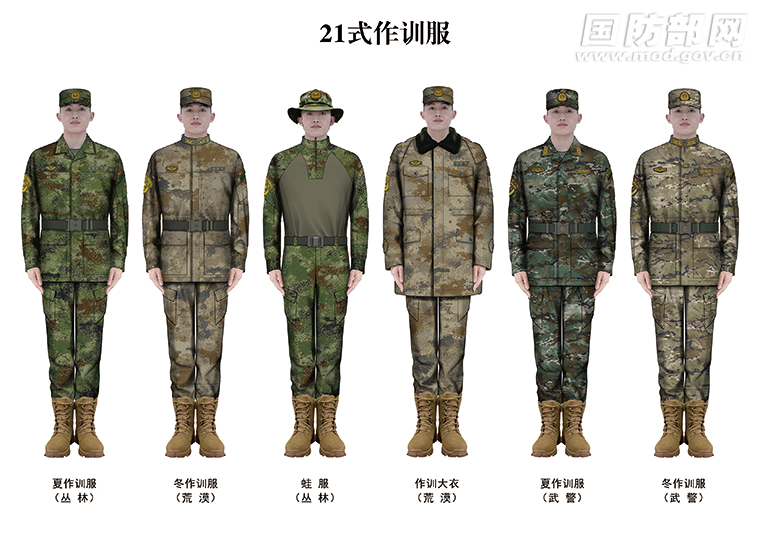
The Type-21 combat uniforms and office uniforms serve as important components in building a military uniform system with Chinese military characteristics in the new era. The Type-21 combat uniforms include the camouflage combat uniforms, specialty combat uniforms, and combat boots. They are used for combat, training, combat preparedness, duty-performing, and military operations other than war (MOOTWs). To be specific, the camouflage combat uniforms have different colors for jungle, desert and other landscapes, while the specialty combat uniforms include those for ship crew, aircrew and ground crew to meet the needs of personnel on special positions. The combat boots (shoes) include types, for general and specialized purposes.
The Type-21 office uniforms are new and optimized series of Chinese military uniforms. In the style of jackets, the Type-21 office uniforms have two varieties, one for spring and autumn, and the other for winter. The office uniforms adopt new colors for each service and match with wide (rolled) brim caps, leather shoes and other items. The Type-21 office uniforms are worn for daily activities such as office working.
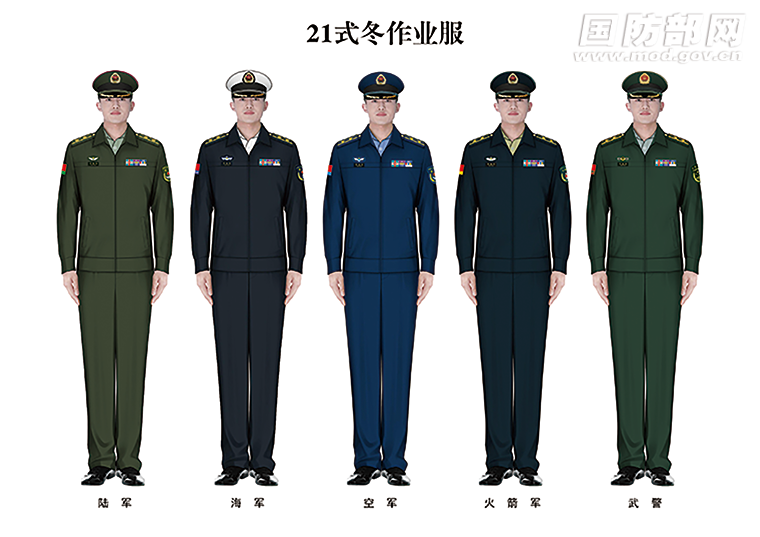
The main considerations for the replacement of uniforms are as follows. Firstly, it highlights combat preparedness. Giving priority to combat preparedness and urgent needs of the military, the camouflage combat uniforms and specialty combat uniforms for ship crew, aircrew and ground crew were distributed first. This has clearly reflected the principle of emphasizing combat preparedness and giving priority to meeting troops’ urgent needs of combat training. Secondly, it insists on thrifty replacement. On the basis of allocating funds reasonably and making full use of existing uniforms, we will gradually introduce new varieties of uniforms step by step, prolong the replacement cycle, and return old uniforms for new ones. This is a way to save expenditure and make good use of the inventory, so as to maximize the efficiency of resource use. Thirdly, it is carried out in an orderly and prudent manner. We have assessed the necessity and feasibility of the replacement, properly managed research and development, and pursued both progress and effectiveness. We have taken steady steps to make sure that a new variety of uniform is introduced only when the product is mature, and the new uniforms will be distributed in a step-by-step and orderly manner, so as to gradually improve the dressing of all service members.
Question: The US President signed the “National Defense Authorization Act for Fiscal Year 2022” (NDAA 2022) on December 27. The NDAA 2022 has many articles relating to China. What's your comment, please?
Answer: The recently unveiled NDAA 2022 contains many negative articles concerning China. It is rife with Cold War mentality and ideological prejudices. Many of its contents hype up the so-called “China threat”, smear China’s defense policy and military development, and make baseless accusations against China on issues concerning Taiwan, Xinjiang, etc. The NDAA 2022 calls for more containment against China in the Asia-Pacific, Latin America, and other regions, instigates economic, trade and technological competition with China, and slanders the normal exchanges and cooperation between China and relevant countries. It has grossly interfered in China’s internal affairs, harmed China’s national sovereignty, security and development interests, undermined mutual trust between the two countries and severely poisoned the state-to-state and mil-to-mil relations. The Chinese side is strongly dissatisfied with and firmly opposed to it.
China stays committed to the path of peaceful development and a national defense policy that is defensive in nature. China is always a builder of world peace, a contributor to global development, a defender of international order, and a provider of public goods. In sharp contrast, the US over the years has waged wars against other countries, causing a large number of civilian casualties and refugees. The US is the biggest threat to regional and global peace and stability. By blatantly interfering in China’s internal affairs, hyping up the so-called "China threat", smearing China’s development, and highlighting competition against China, the US is dragging the bilateral and mil-to-mil relations down a dangerous path.
The Chinese side urges the US side to abandon the concept of zero-sum game, view China’s defense and military development in a rational and objective way, stop churning out hostile policies against China, and stop portraying China as America’s adversary or enemy. Instead, it should do more to promote a stable and sound relationship between the two countries and the two militaries.
Question: Since the beginning of this year, the COVID-19 pandemic has kept spreading across the world, and the profound changes unseen in a century have evolved in depth. In the face of the complex and volatile international situation, the Chinese military has actively carried out international military cooperation and achieved fruitful results. China’s PLA Daily has reviewed the highlights of the Chinese military's international military cooperation in 2021 in an article published on December 23. Cloud you give us more details?
Answer: 2021 is a milestone in the history of the CPC and China. On the front of international military cooperation, the Chinese military has been implementing Xi Jinping Thought on Strengthening the Military and the CMC Chairman Responsibility System and taking into account the great changes unseen in a century and China's overall strategy to realize the great rejuvenation of the Chinese nation. It has strengthened strategic planning and made innovative and pioneering efforts to safeguard national sovereignty, security, and development interests, promote world peace and stability and build a community with a shared future for mankind. The main features of this year’s international military cooperation are as follows.
First, staying in line with the theme of celebrating the centenary of the CPC. We have made great efforts to promote the major achievements of the CPC over the past century through a variety of international military cooperation activities including high-level exchanges, professional exchanges, and multilateral conferences. Military attachés from around 70 countries were invited to visit the exhibition on CPC history themed "Staying True to the Party's Original Aspiration and Founding Mission". Meanwhile, defense and military leaders of Russia, Cambodia, Vietnam, Laos, Namibia, Syria, Belarus, Fiji, Cuba, etc., have expressed their best wishes to China through letters, telephone calls and published articles.
Second, providing a strong support for maintaining overall strategic stability. The military relationship between China and Russia has continued to develop at a high level, with new breakthroughs in strategic coordination. China-US military relationship has stayed generally stable while challenges remain. Chinese and European defense authorities and militaries have maintained strategic communication. China’s exchanges and cooperation with neighboring countries have deepened and the vision of building a community of shared future with neighboring countries has become more popular. The Chinese military has strengthened military exchanges and cooperation with many developing countries, upheld and practiced true multilateralism, and promoted cooperation in international arms control.
Third, serving the main responsibility of the military in improving combat readiness. Despite continued COVID-19 restrictions, the Chinese military has proactively organized or participated in multiple joint exercises and training and military games with foreign militaries, including the exercise Xibu Unity 2021, Shared Destiny 2021, International Army Games (IAG) 2021. These activities not only deepened mutual trust between Chinese and foreign armed forces, but also improved the state of realistic training.
Fourth, promoting the vision of building a community with a shared future for mankind. To implement President Xi Jinping’s pledge on making China's COVID-19 vaccines a global public good and promote international cooperation in fighting the pandemic, in addition to the provision of material assistance to over 50 militaries last year, the Chinese military has provided vaccines and material assistance to over 30 militaries this year and continued to provide public security goods to the international community and take an active part in peacekeeping, maritime escort, and humanitarian rescue operations.
Fifth, safeguarding national sovereignty, dignity and core interests. In response to the interference and provocation of some countries on issues concerning Taiwan and the South China Sea, the Chinese military has carried out resolute military countermeasures and organized targeted exercises and training. Meanwhile, we also lodged solemn representations with relevant parties and issued timely statements to make clear our positions.
Sixth, improving strategic management capabilities. The Regulations on International Military Cooperation issued at the beginning of the year has clarified the main tasks and cooperation fields for China’s international military cooperation, and established mechanisms on the planning, risk management, work support, and assessment and supervision. It serves as a regulatory basis to further enhance the comprehensive effectiveness and innovative development of international military cooperation in the new era.
The Chinese military stays committed to promoting peace with great courage and persistence. Looking forward to the new year, the Chinese military will resolutely fulfill its missions and tasks in the new era, faithfully practice the vision of building a community with a shared future for mankind, and comprehensively promote international military cooperation, so as to provide strong strategic support for realizing the Chinese dream of national rejuvenation, and to make new and greater contributions to safeguarding world peace and promoting common development.
Question: The US Indo-Pacific Command (INDOPACOM) recently released a statement saying that representatives from the INDOPACOM, the Pacific Fleet and the Pacific Air Forces recently held the annual Military Maritime Consultative Agreement (MMCA) working group and flag officer meeting with their counterparts from the Chinese PLA Navy and Air Force via video link. The US Department of Defense spokesperson said that the military engagement between the two countries is vital for reducing the risk of miscalculation. Could you please give us more information about the meeting?
Answer: The Chinese and American militaries held this year’s MMCA meeting via video link from December 15 to 17. The two sides exchanged views on the air and maritime safety and security situation between China and the US, and evaluated the execution of the Rules of Behavior (ROB) for Safety of Maritime and Air Encounter. They also discussed measures to improve military maritime safety and security and had a preliminary exchange on the arrangements for MMCA 2022.
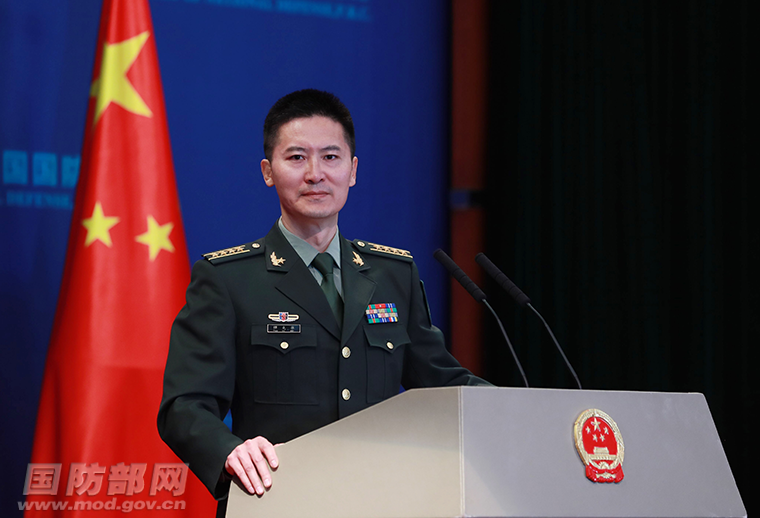
The Chinese side made it clear that the safety of vessels or aircraft is indivisible from national security. The root cause of air and maritime safety and security problems between the two countries is the long-term and intense close-in reconnaissance and surveillance activities and highly targeted exercises and training conducted by US military vessels and aircraft in the vicinity of China, and their frequent harassing and provocative operations against China. The key to resolve these problems is for the US side to stop such hostile military operations.
Question: It is reported that recently the China-Vietnam “Peace Rescue-2021” joint medical exercise was successfully held at Mong Cai city in Quang Ninh province of Vietnam. Please tell us more about this exercise and its main features.
Answer: In accordance with the annual exchanges and cooperation plan, the Chinese and Vietnamese militaries held the “Peace Rescue-2021” joint medical exercise at Mong Cai city in Quang Ninh province of Vietnam from December 6 to 12, with more than 600 participants from the two sides. The exercise has the following three features.
First, the theme of the exercise was clearly highlighted. Upholding the lofty cause of “saving lives and curing the injured” and sticking to the theme of “Peace Rescue”, the exercise focused on disaster relief and pandemic control, and practiced subjects of organization and command, treatment of the wounded, pandemic prevention and control, and logistic support in accordance with real combat standards. The exercise has tempered inter-operability and emergency response capabilities of medical service troops of the two militaries.
Second, in-depth integration was emphasized in the exercise. The two sides learned from each other through such subjects as joint medical service command, joint on-site rescue, treatment of a large number of the wounded, and joint pandemic prevention and control. They explored a joint rescue mode featuring “coordinated command, real-time information sharing, unified deployment of forces, and overall planning and allocation of resources”, providing useful reference for conducting international humanitarian medical rescue missions.
Third, innovative means were adopted in the exercise. Employing the latest medical service concepts, the exercise used advanced equipment and devices and new technological means such as real-time visualization, to enhance the support capabilities of the two militaries’ medical service systems.
The Peace Rescue-2021 was the first live medical service exercise between the two militaries, and the first time that the Chinese military dispatched a complete medical service unit to participate in a joint medical exercise overseas since the outbreak of the COVID-19 pandemic. The exercise concluded successfully with zero infection, deepening the comradeship, mutual trust and cooperation between the two militaries.
Question: It is reported that the US Secretary of Defense Lioyd Austin recently said that China’s military is on pace to become a peer competitor to the US in Asia—and, eventually, around the world, and called the Chinese military “the pacing challenge”. Also, Admiral John Aquilino, commander of US Indo-Pacific Command, claimed that the Chinese military is rapidly modernizing its forces with new missiles, warships, nuclear forces, cyber attack capabilities, and space weapons in recent years, which has pushed Australia to seek closer security connections with the US. He also said the trilateral nuclear submarine pact among the US, the UK and Australia will enable the latter to better cope with regional security threats. Please comment on that.
Answer: For some time, senior US defense and military officials have been sticking to bias against China and distorting facts to ask for a bigger defense budget internally and manipulate public opinions externally. They have put all kinds of labels on China and groundlessly hyped up China’s military development. The Chinese side is firmly opposed to this and has lodged solemn representations with the US side.
To maintain its global dominance, the US keeps largely increasing its defense expenditure. Despite the fact that it is in possession of the world’s most advanced weapons and equipment and the largest cluster of overseas military bases, the US continues to expand its military presence without any restraint. From Yugoslavia to Libya, from Syria to Afghanistan, the US has driven its war machine everywhere to ignite powder kegs, leaving foreign countries devastated in ruins and throwing their peoples into the abyss of misery and despair. The US has already lost its credibility and it is ridiculous for it to smear China as a “pacing challenge”.
The Chinese side holds that the US-UK-Australia nuclear submarine deal constitutes a serious risk of nuclear proliferation, and violates the purpose and principles of the Treaty on the Non-Proliferation of Nuclear Weapons (NPT). It has caused vigilance and resistance of a growing number of countries. However, the three countries, turning a blind eye to the international community’s concerns, are bent on proceeding with the nuclear submarine cooperation, which again exposes their double standards on non-proliferation – they use whatever rules that cater to their needs and reject those that don’t.
The world belongs to the whole international community. It is not the exclusive or private property of any force or bloc. The Asian-Pacific is a shared home of all regional countries and their peoples. It won’t allow certain group or alliance to spread disinformation and practice the beggar-thy-neighbor or adversarial policy. China will stay committed to a defense policy that’s defensive in nature, promote a regional security cooperation framework and a new type of security partnership in the Asian-Pacific, and continue to play a constructive role in strengthening regional security dialogue, mutual trust, and cooperation.
Question: It is reported that Taiwan's Democratic Progressive Party (DPP) authorities has recently made frequent hyping about the so-called “threats from the mainland”, claiming that more than 940 sorties of military planes dispatched by the PLA have entered Taiwan's "airspace" this year, which is twice the number of 2019 and 2020 together. In addition, officials from the US Department of Defense said that China's actions in the vicinity of Taiwan have increased the possibility of misjudgment among the armed forces in the Indo-Pacific region, and it is an urgent task to strengthen Taiwan's "self-defense". What's your comment, please?
Answer: The root cause of the current tensions across the Taiwan Strait lies in the provocations of the DPP authorities and the "Taiwan independence" separatist forces, and the attempts by external forces to use Taiwan to contain China. The PLA is duty-bound to safeguard China's national sovereignty and security and curb separatist acts by "Taiwan independence" forces. Since the beginning of this year, the PLA has dispatched bombers, reconnaissance aircraft, and fighter jets to carry out regular patrols around the Taiwan island, organized routine joint combat readiness patrols around the island with multiple arms and services, and carried out regular realistic combat exercises on joint sea assault, joint land strike and joint air defense operations in the air and maritime areas around the island. The actual number of aircraft dispatched can only be greater than the number claimed by the DPP authorities. Our goal is very clear. These operations are responses to the collusion between forces in and outside Taiwan and ill deeds challenging the one-China principle. They are meant to defend China's national sovereignty and territorial integrity, and safeguard the common well-being of compatriots on both sides of the Strait and peace and stability across the Strait.
Question: It is reported that the Japanese government plans to complete the revision of the National Security Strategy, National Defense Program Outline, and Medium Term Defense Program within one year. What’s your comment on this?
Answer: Recently, the Japanese side has tried to break through the "exclusively defense-oriented" policy on the grounds of so-called "severe regional security environment" and pointed the spear of military confrontation at neighboring countries. This is an extremely wrong and dangerous act. The war of aggression launched by Japanese militarists in the past brought serious disasters to the people of countries in the region, including China, and the painful memories remain unforgotten. In this month, December 13 marks China's National Memorial Day for Nanjing Massacre Victims.
The national tragedy shall never be forgotten, and the tranquility of our homeland must be guarded at all costs. The Chinese people and the Chinese military will never allow such historical tragedy to recur on any inch of the Chinese land or any single compatriot.
We hope that the Japanese side can seriously reflect on its history of aggression, use history as a lesson to restrain its words and deeds, abide by the principles established in the four political documents between China and Japan, carefully and properly handle major and sensitive issues between China and Japan, and do more to enhance mutual trust with neighboring countries and promote regional peace and stability.
Question: It is reported that the US Department of Defense has recently decided not to give any form of punishment to the military personnel who took part in a drone attack in Kabul, Afghanistan, this August and killed ten civilians. Please comment on that.
Answer: We have noticed relevant reports. The Chinese side believes that the use of all combat approaches and means, including armed drones, must comply with relevant rules of the international humanitarian law, especially on the strict distinction between innocent civilians and combat personnel. In August this year, ten Afghan civilians, including seven children, were killed in a US drone attack. Months later, as the so-called Summit for Democracy concluded, these innocent Afghan victims and their families have yet to see any justice being done. That is a blatant break on the rules of international humanitarian law, and a huge irony on the so-called “democracy” and “human rights” touted by the US itself.
The Chinese side urges the US to launch a thorough investigation into the event, punish the perpetrators, and return justice to the Afghan people. We also call upon the international community to take joint actions to investigate those war crimes breaking international rule of law and slaughtering innocent civilians and hold those responsible to justice.
Question: It is learned that this year’s disposal of Abandoned Chemical Weapons (ACW) left by Japanese aggressors has been completed. Could you please tell us more about that?
Answer: The issue of ACW left by Japanese aggressors remains a major historical one between China and Japan. The disposal of ACW started in the 1980s and has proceeded smoothly in general during the past 30-plus years. This year’s annual ACW-disposal operations mainly focused on the excavation and destruction of chemical weapons buried at Haerba-ling in northeast China, and the transportation of chemical weapons along the southern and northern routes, which has achieved the expected results.
Going forward, relevant military and civilian departments will continue to work closely together to overcome difficulties, clear away all the ACW left by Japanese aggressors, and ensure a safe land for the Chinese people as soon as possible.
Time and tide stops for no one. Looking back on 2021, there are many memorable stories and voices.
We remember service members chanting vows of "pledging to the Party to build a strong military." The glorious Chinese military has being marching forward with the times and carried out the campaign of studying Party history. It always keeps in mind the foundation and the soul of the military and strives to achieve the military’s centenary goal.
We remember the words "pure, true love saved for the motherland". The brave Chinese military remains true to its original aspiration and keeps its missions firmly in mind. In the context of long-term pandemic restrictions, service members have been focusing on the main responsibility of the military in improving combat readiness, defending the motherland and the people with their youth and blood, and resolutely safeguarding national sovereignty, security and development interests.
“Actions speak louder than words.” The peace-loving Chinese military holds high the banner of win-win cooperation, honors its international responsibilities and obligations, and conducts extensive global cooperation in the fight against the COVID-19 pandemic. It upholds and practices true multilateralism, and promotes the building of a community of with a shared future for mankind. Service members are supposed to be iron shields in defending the magnificent motherland and be sword guardians in protecting lasting peace and security for all families. Every service member, including me, is ready for that.
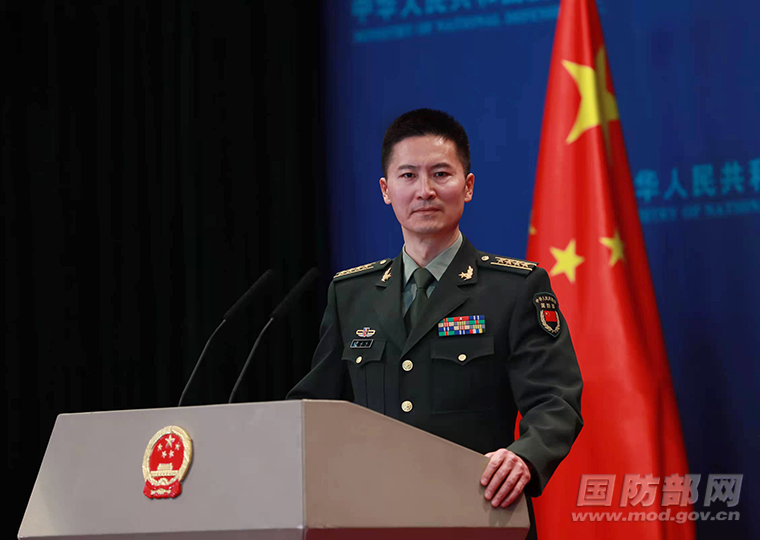
In 2022, under the guidance of Xi Jinping Thought on Strengthening the Military, the Chinese military will continue to enhance its political work, strengthen itself through reform, technology, and talent development, and run the military in accordance with law. The Chinese military will accelerate the modernization of national defense and the armed forces, resolutely fulfill the missions and tasks entrusted by the Party and the people, and greet the 20th CPC National Congress with outstanding achievements.


